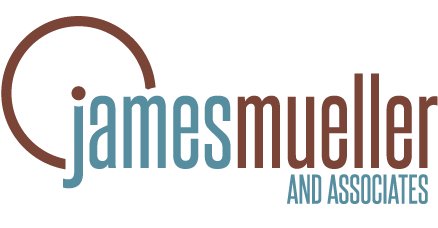Individual Work Plans are Effective at Managing Millennials
A well-crafted work plan is first and foremost clear about expectations, including the (a) areas of responsibility, (b) the outcomes that demonstrate success, and (c) the key activities one undertakes to get results. People thrive on clarity and it reduces anxiety and confusion.
The workplace is changing—employee expectations are no longer what they were a few years ago. There is a lot of evidence that this movement is being fueled by the influx of Millennials, who are unlike the quiet generation of the Xer’s and definitely different from the Baby Boomers.
Managing performance in this new work environment can be tricky. There are many approaches and consultants out there with good ideas. My advice is pick the one that makes sense and run with it. But be consistent.
Over the years as a team leader, I recognized that if I paid attention to a few important human factors, not only did individual performance improve, but team members are happier. And when people are happy, the have more energy to invest. The four things that I pay attention to are: clarity, trust, aspiration, and the experience of success. I discussed these in more detail in the blog I posted in January, titled Leadership Team Development.
The key to success is translating these into individual, annual work plans; and changing performance culture from assessment to coaching.
Individual Work Plans

Each individual’s work plan should be developed in conversation between the manager and direct report.
Individual work plans (most often crafted annually) are written from the perspective of individual team members. They outline individual accountabilities and performance expectations. They are most effective when developed collaboratively between direct reports and managers and are used in conjunction with regular coaching sessions.
A well-crafted work plan is first and foremost clear about expectations, including the what and the how. The what is the work: (a) areas of responsibility, (b) the outcomes that demonstrate success, and (c) the key activities one undertakes to get results. The how is the way people behave when they work. This includes collaboration, communication, deportment, and a whole range of other professional expectations that companies promote as part of their culture and expectations. People thrive on clarity and it reduces anxiety and confusion.
The second factor is trust. I recommend that each individual’s work plan be developed in conversation between the manager and direct report. Most often the areas of responsibility are determined in advance, they are in the job description—but there are times (e.g. organizational transition) when they might be negotiated. Whether this is a topic of conversation is up to the manager, who has final authority to determine areas of responsibility for her direct report.
Once the areas of responsibility are clearly defined, I find it important to ask the individual for whom the plan is being written to write one or two sentences that describe what success looks like. This is how the manager taps into her direct reports aspiration for achievement. This can be prompted by the manager asking: What would you like to accomplish this year in each of your areas of responsibility? What does success look like to you? What will be improved or different in substantive ways? I find this step particularly important for Millennials, most of whom need to feel a sense of personal expression and fulfillment in their jobs.
Once this is done, the statements should be reviewed by the manager to see how well they align with her expectations. Most often there is alignment that just needs tweaking. But, in those instances where there are broadly different perspectives—and it’s good that it is identified now—it is important for the manager and direct report to have an in-depth conversation. This can be a tricky conversation, so it needs to be carefully planned. I always recommend that the manager start by asking thoughtful questions to explore what is important to her direct report, why it is important, and how her direct report feels it will make a difference. As a next step, the manager should ask “what about” questions regarding the issues that are not addressed.
Once agreement is achieved on the areas of responsibility, the next step is to define a handful of the most important outcomes that need to be achieved.
Let me provide an example. Let’s say the direct report is responsible for the young professionals program and one area of responsibility is to increase engagement and support from this segment. When asked to define what success looks like, the direct report writes: monthly themed happy hours with average attendance of 50 young professionals and one annual large community service project. Recognizing that this is too broad, the manager might ask a series of questions like: Why do you think we want to increase engagement? What is our goal? What would it look like if we had 50 new young professionals engaged promoting our organization? What would they be doing for us? How might they be helping us gain visibility? Or succeed at our mission? Or further our work? If we did it right, what difference would a highly motivated young professional do that would impact our future? Or impact our fundraising? Or impact the lives of our constituents? With this in mind, now what would you like to see?
This isn’t a rapid-fire inquiry—it’s a thoughtful conversation.
Once agreement is achieved on the areas of responsibility, the next step is to define a handful of the most important outcomes that need to be achieved. Though there are many outcomes that can be discussed, you want to identify those that you will track on a regular basis.
Using our example above, outcomes might include:
- The number of young professionals making contributions greater than $50 increases from x to y.
- Or total giving from young professionals reaches z.
Be strategic. Don’t oversaturate the work plan with too many outcomes for each area of responsibility. Pick those that have the most impact on achieving overall program objectives and are likely to positively affect other outcomes. These can be adjusted as time goes by. For instance, in conversations between the manager and direct report you may realize that there are better indicators of success. This doesn’t mean you change willy-nilly or just because you aren’t getting results. Changes must have substantive reasons that make sense and will enhance performance.
As success outcomes should be measured so should key activities. The manager and her direct report need to agree upon what key activities will be undertaken for each area of responsibility to achieve desired outcomes. Again, these should be the activities that hold the hold the greatest promise, those that you believe are highly predictive of success. They are also the activities that will be tracked, the ones that the manager will regularly review with her direct report. This creates a cadence of accountability that kindles momentum and constant forward movement.
So far we have discussed the what of the annual plan. The how is much simpler to craft. I usually include it as a second part of the work plan. Expectations regarding how team members behave in the workplace should be consistent across all team members–the same expectations, unless there is a particular area wherein one individual needs to improve. In this case, make the expectation explicit. For example, be on time for all team meetings or respond to team member requests within 24 hours.
Finally, we come to the coaching sessions. When teams use workplans they generate a thoughtfully developed performance document that has buy-in from both the manager and the individual responsible for the job. This document provides a sound basis for weekly, bi-weekly, or monthly conversations about progress. The conversations should be inquiry based (with the manager taking the lead), focusing on the key activities—discussing the activities were undertaken, the results were achieved, what’s working and not working, any adjustments that should be made, and what activities will be undertaken between this conversation and the next.
A thoughtfully developed work plan combined with regular coaching sessions holds great promise for yielding success—and success is one of the most powerful motivators for quality performance. The key is to create a consistent cadence of discussion that focuses on performance.


